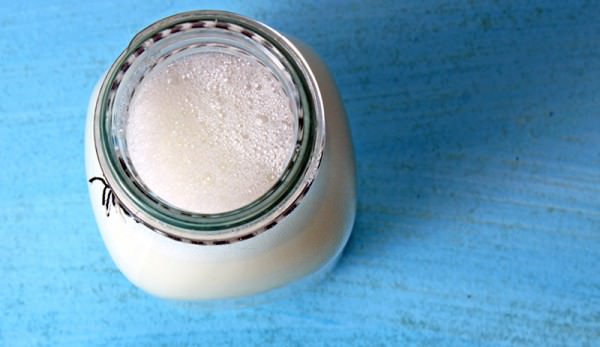
Goat’s milk is often unfairly stereotyped as being “goaty” in flavor. While this may often be the case for store-bought goat’s milk, a quality dairy goat raised on a small farm and provided the proper diet can provide a regular supply of flavorful milk. Having grown up on a farm raising goats and the occasional cow, I have memories of switching from goat’s milk to cow’s milk and complaining for about a day following the switch before my taste buds adapted. This may very well have been the mind of a picky child, but the likely culprit was my parents’ increased knowledge of proper goat care.
What Gives Goat’s Milk Its Flavor
The core difference between properly prepared goat’s milk and cow’s milk is not so much flavor as it is variances in butterfat. Many who are lactose intolerant can digest goat’s milk without a problem. Not only does goat’s milk have less butterfat, but it also has only trace amounts of casein, the common allergen found in cow’s milk.
Casein is a protein that causes fat globules to clump together. Because of the near lack of this protein in goat’s milk, it tends to have smaller fat globules. While both cow’s milk and goat’s milk have high vitamin content, goat’s milk has higher levels overall, as well as the added bonus of lower cholesterol.
Achieving a desirable flavor in goat’s milk requires attention to three variables:
- the goat breed (and genes)
- the goat’s diet
- proper handling in milking and storing milk
What Breed’s Got To Do With It
Nubian, La Mancha, Saanen and Alpine are popular milking breeds for a reason. All have fairly high levels of butterfat and therefore (arguably) the best flavor. Nubians have the highest buttermilk content of all dairy breeds, at 4 to 5 percent, with La Manchas coming in a close second at 4 to 4.5 percent. Saanen and Alpines average at 3.5 percent fat content. There are many other factors to consider in purchasing a dairy goat, including volume of milk production, personality and size, so do your research before purchasing a breed solely based on milk flavor.
Your Goat’s Milk Is What It Eats
Goats are browsers and will eat the most flavorful, nutritious plants they can access. This will benefit you as much as them when it comes to milk flavor. If you provide them with plenty of good plants to forage, particularly in the spring, and substitute with good sweet feed when needed, the results will show in your milk. Minerals are also important. Provide your gals with premium, loose, free-choice mineral and kelp and you’ll all be happy.
Attention to health and parasite control shouldn’t be taken lightly either. Mastitis (breast-tissue inflammation), for instance, can have an effect on milk flavor. Not all goat handlers agree that diet has a direct correlation to milk flavor, but a holistic approach to ensuring a happy, healthy goat will show come milking time.
Handling & Storing Goat’s Milk
In the end, all of your planning and careful handling will be for naught if you don’t take the proper steps when milking. Don’t go overboard, but attention to the following tips will help achieve good milk flavor.
First, there is filtering. Purchase quality filters designed specifically for filtering milk. While keeping a clean milk stand and wiping udders (and hands) clean before milking will minimize the amount of residue (dirt, hair, etc.) that falls in the milk, it can be difficult to keep everything out. While some will use filters during milking, pouring the milk through a filter after you have finished milking is generally enough. Use high-quality, stainless steel, seamless milk buckets to prevent unwanted bacteria buildup. Always release the cat’s share (or dog’s share) of milk first by giving the first couple of squirts to your faithful barn companion.
Lactic acid and bacteria in goat’s milk will begin to introduce changes into the milk flavor if it isn’t chilled fairly quickly. Raw milk left out for several days has everything it needs to make sour cream and other fermented milk products, so you can use this to your advantage. To ensure optimal fresh flavor, refrigerate your milk shortly after milking. Try to refrigerate within half an hour, but don’t rush things if you have some quick barn chores you need to finish up first. Some go the extra mile and refrigerate in an extra-cold (36-38 degrees F) refrigerator or put the milk jar in an ice bath immediately after milking before transferring it to the refrigerator. Once chilled, milk will keep its flavor for a month or more.
Do what works for you and experiment, but don’t overthink it too much. Buy dairy goats from a line with good genetics, give them the care and diet they deserve, keep your milking equipment clean, and you’ll be sure to have plenty of sweet-tasting milk to share with skeptics when they pull the “goaty flavor” line on you.




